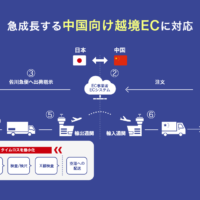商品の梱包と発送方法にはどのようなポイントがありますか?
商品の梱包と発送については、製品を安全に届けるための基本的なポイントと最適なプラクティスに従うことが重要です。
以下に主なポイントを挙げます:
1. 梱包材の選択 :
– 壊れやすい品物には、防水能力のあるプチプチ(バブルラップ)や緩衝材を使用して保護します。
– 本や衣類のような非壊れ物は、プラスチックバッグや紙の封筒で充分な場合もあります。
– 重量物の場合は、丈夫なダンボール箱と補強テープが必要です。
2. 適切な箱のサイズ :
– 箱は商品にぴったり合ったサイズを選びます。
余計な空間があると、中で商品が動いてしまい破損の原因となり得ます。
– 箱の内側に緩衝材を使い、商品が動かないように固定します。
3. 箱の封じ方 :
– テープは箱をしっかりと封じるために「H」形に貼ります。
これは底も同様です。
4. ラベルの貼り方 :
– 送り状は箱の表面が滑らかで丈夫な部分にしっかりと貼ります。
ラベルがはがれると配送トラブルの原因になります。
– 送り先や送り主の情報は、明瞭に記載し間違いがないようにします。
5. 重量とサイズの規制確認 :
– 使う配送サービスの規制に従い、重量やサイズの制限内で梱包します。
6. 追跡可能な配送方法の選択 :
– 追跡機能がついている配送方法を選ぶことで、配送の進捗を確認でき、トラブルがあった場合に対応ができます。
7. 輸送中の気候や環境に合わせた梱包 :
– 気候が湿度が高い場合や雨が多い地域への発送では、防水機能のある梱包を心掛けます。
8. 商品に応じた特別な注意 :
– 電子機器などの敏感な品物は静電気防止材で梱包し、リチウムイオンバッテリー含む製品は航空輸送の際の規制を厳守します。
これらのポイントは経験則や物流業者のガイドライン、それに消費者のフィードバックに基づいており、製品が最終的な受取人に対して最良の状態で到着するための最適な方法です。
実際の配送の際には、配送業者の具体的な指示いと仕様に沿って行う必要があります。
これには、国際配送か国内配送か、標準配送か急行配送かなど、配送の種類に応じた考慮が必要です。
また、梱包された商品の安全を確保することは、消費者としての信頼と満足度を高め、繰り返し購入や良い口コミを促進することにも直結します。
個人輸出の際の支払い受け取り方法はどんなオプションがありますか?
個人輸出の際における支払い受け取り方法にはいくつかのオプションがあり、国際的な取引に適した方法を選ぶことが大切です。
以下は主な支払いオプションと、それぞれのメリットとデメリットです:
1. PayPal(ペイパル)
– メリット:セキュリティが高く、迅速な取引が可能。
多くの国で利用可能。
– デメリット:手数料が発生する場合がある。
2. 銀行振込(国際送金)
– メリット:大金を送金するのに適している。
信頼性が高い。
– デメリット:手数料が高い場合がある。
手続きや反映に時間がかかることがある。
3. クレジットカード
– メリット:広く使われており、手続きが簡単。
– デメリット:不正使用や詐欺のリスク。
手数料が発生する。
4. 電子マネー/デジタル決済サービス(例:Alipay、WeChat Pay)
– メリット:手軽で速い。
スマートフォンでの取引に最適。
– デメリット:利用可能な国や地域が限られていることがある。
5. 貿易用の決済手形(例:信用状)
– メリット:国際取引におけるリスクを抑える仕組みがある。
– デメリット:手続きが複雑で時間がかかる。
小規模な取引には不向き。
6. 仮想通貨(例:ビットコイン)
– メリット:迅速な国境を越えた送金が可能。
低い手数料で取引できることがある。
– デメリット:価格の変動が激しく、法規制が不確定なことがある。
個人輸出においては、取引の安全性や速度、利便性、手数料のコスト、およびお住まいの国や送金先国の法律や規制に合っているかを考慮して、最適な支払い方法を選ぶことが重要です。
また、取引相手との信頼関係も重視する必要があります。
注意点として、個人輸出で支払いを受け取る際は、国内外の税法に遵守し、必要に応じて税務申告を行うことが求められます。
取引の記録をしっかりと保管しておくこと、また金融犯罪に関連する法令(マネーロンダリング防止法など)を遵守して行動することも忘れてはなりません。実際の取引を行う際には、最新の情報、規制、手数料などを個々に確認する必要があります。
輸出ビジネスで利益を出すための商品リサーチ方法
輸出ビジネスにおける商品リサーチの方法には、以下のステップが含まれます。
1. 市場分析 : まず、どの国や地域に輸出を考えているかを明確にします。それぞれの市場の文化、法規制、需要などを理解することが重要です。
プラットフォーム自体もここで選ぶ必要があります。一般的に使用されるのはAmazonとeBayで一部EstyやReverbなどを利用する人もいます。
2. 競合分析 : 目標市場における競合他社の製品や価格設定、マーケティング戦略を分析します。これにより、どのような製品が需要があるか、または市場に欠けているかを理解できます。
3. 製品選定 : 分析した情報を基に、どの製品を輸出するかを決定します。製品は、市場の需要に合致し、競合と差別化できるものでなければなりません。
輸出ビジネスでは商品が競合と被りやすいためその点で差別化を図るかを決めるのが重要です。
4. 供給元のリサーチ : 製品を供給できる信頼性の高いメーカーやサプライヤーを探します。コスト、品質、生産能力などを考慮に入れる必要があります。
5. 規制と法律の確認 : 輸出先の国の輸入規制、税関手続き、特許や商標の法律などを確認し、遵守する必要があります。
特にヨーロッパは法律が毎年のように変わるので注意が必要です。
6. 市場テスト : 小規模なテスト輸出を行い、市場の反応を見ます。これにより、製品の受け入れや改善点を把握できます。
7. 価格戦略の設定 : 製品のコスト、競合製品の価格、市場の購買力などを考慮して、適切な価格設定を行います。
8. マーケティング計画の策定 : 目標市場に合ったマーケティング戦略を策定し、ブランド認知度の向上や販売促進を図ります。
9. 継続的なモニタリングと改善 : 市場の動向、顧客のフィードバック、販売データなどを定期的に分析し、ビジネス戦略を適宜調整していきます。
これらのステップを通じて、効果的な輸出ビジネスの商品リサーチが行えます。市場の動向や消費者のニーズは常に変化するため、柔軟に対応し続けることが重要です。



















